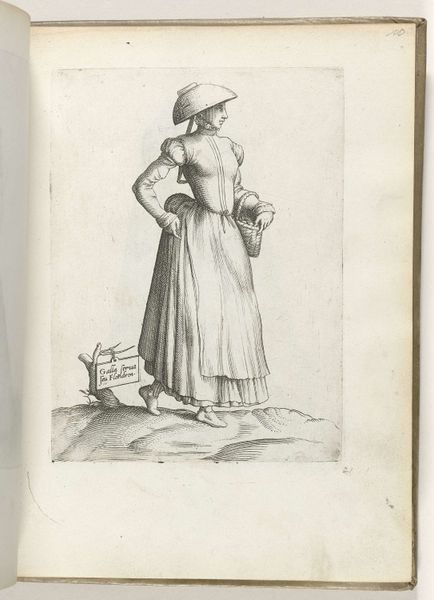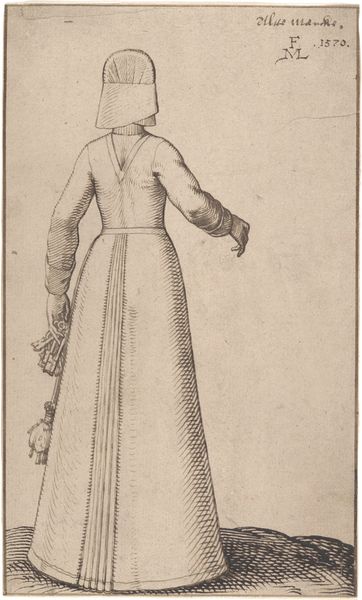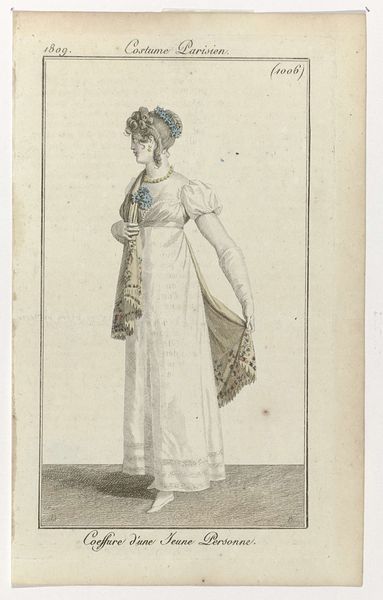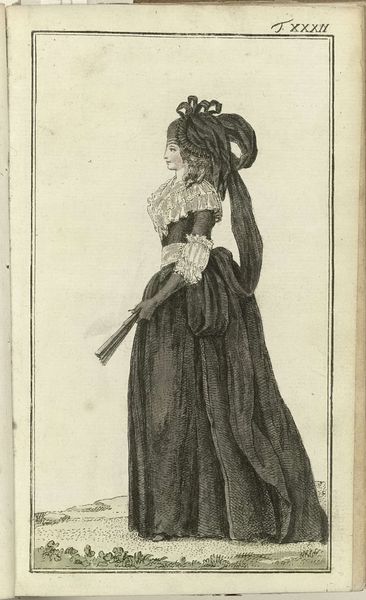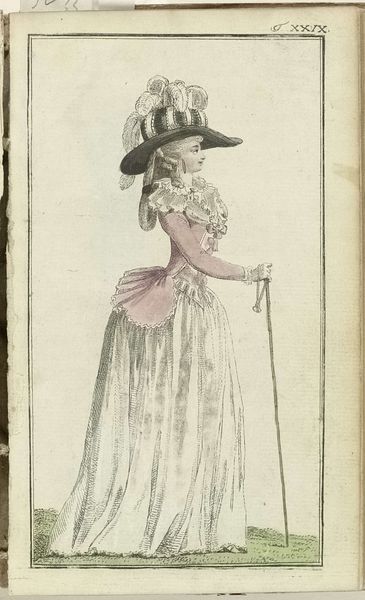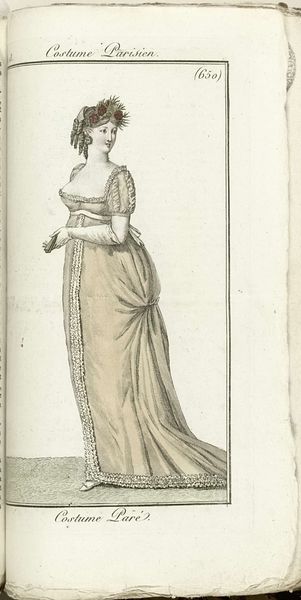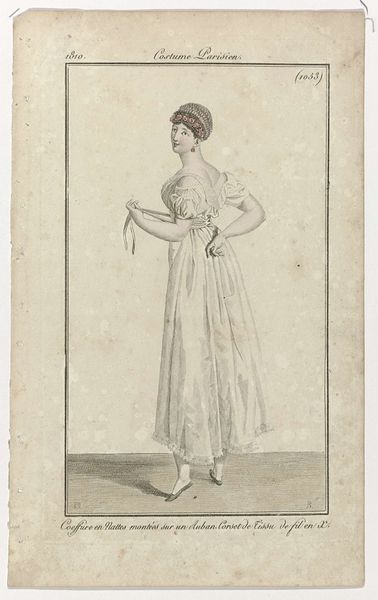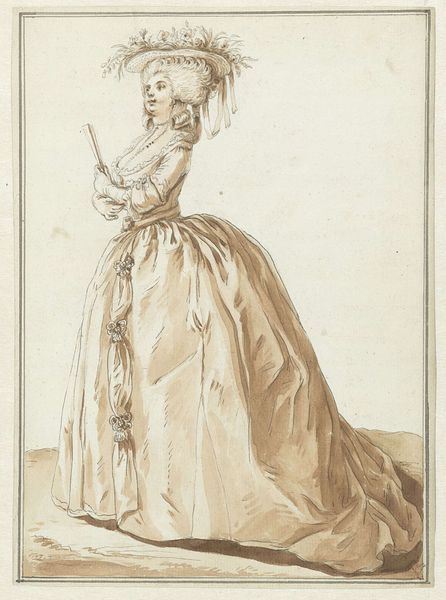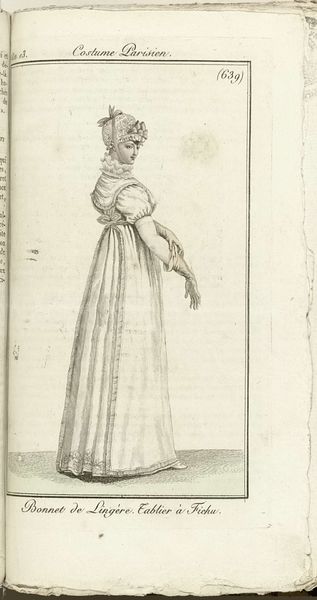
Journal des Dames et des Modes, Costume Parisien, 15 juin 1817 (1655) 1817
0:00
0:00
horacevernet
Rijksmuseum
print, engraving
#
portrait
# print
#
old engraving style
#
figuration
#
romanticism
#
line
#
dress
#
engraving
Dimensions: height 178 mm, width 108 mm
Copyright: Rijks Museum: Open Domain
Curator: Ah, this image feels like stepping into a Jane Austen novel. So demure. Editor: Indeed. This engraving, entitled "Journal des Dames et des Modes, Costume Parisien, 15 juin 1817", captures the essence of early 19th-century fashion. Created in 1817, the piece comes from the Rijksmuseum's collection. The artist is Horace Vernet. What resonates most with you in this delicate portrayal? Curator: Her stance. It’s as if she’s performing femininity, all elegance and constraint. Those impossibly long skirts pooling around her feet whisper of the era's societal expectations, a stage where women had to constantly "be" a certain way. And that slightly severe hat softens things just so. Editor: The hat with its delicate netting and the walking stick are key emblems here. The walking stick wasn't merely a functional item, but an assertive signal of the wearer’s self-possession and independence, literally their ability to take to the street at a time when women’s mobility was intensely surveilled. The dress, the famous Empire silhouette, worn high and close to the body almost like a classical statue, a signifier of virtuous republicanism, becomes something rather different when allied to symbols of assertion like the stick or lace hat that gave its wearer some shelter. It makes the outfit almost confrontational. Curator: Absolutely. It's a quiet rebellion, coded in fabric and posture. Like a visual spell, those signifiers conjure unspoken desires for agency, a gentle refusal contained in a beautifully rendered image. One can almost hear the hushed secrets exchanged over cups of tea. I feel as if she may topple forward in this gown any second, and, to me, this reveals fragility and expectation simultaneously. Editor: Precisely! And this tension, caught so acutely by Vernet, exemplifies Romanticism’s fascination with both the ideal and the human flaw. It highlights our longing for order colliding with an almost defiant recognition of the limitations. Fashion plates like these do not only dictate dress; they're a cultural archive of ideals and silent protests. The line here, both crisp and subtle, serves almost as both record and critique of the period it represents. Curator: You know, viewing art like this makes you reconsider, what did it mean to be a subject, how fashion made a period, and how it impacts who and what we are even now. I appreciate the constraints within, allowing the image to be a celebration of silent hopes, as well as controlled fashion, all captured within that fine engraving. Editor: Agreed; revisiting these delicate impressions urges us to reassess those earlier whispers echoing quietly down through the corridors of time.
Comments
No comments
Be the first to comment and join the conversation on the ultimate creative platform.


